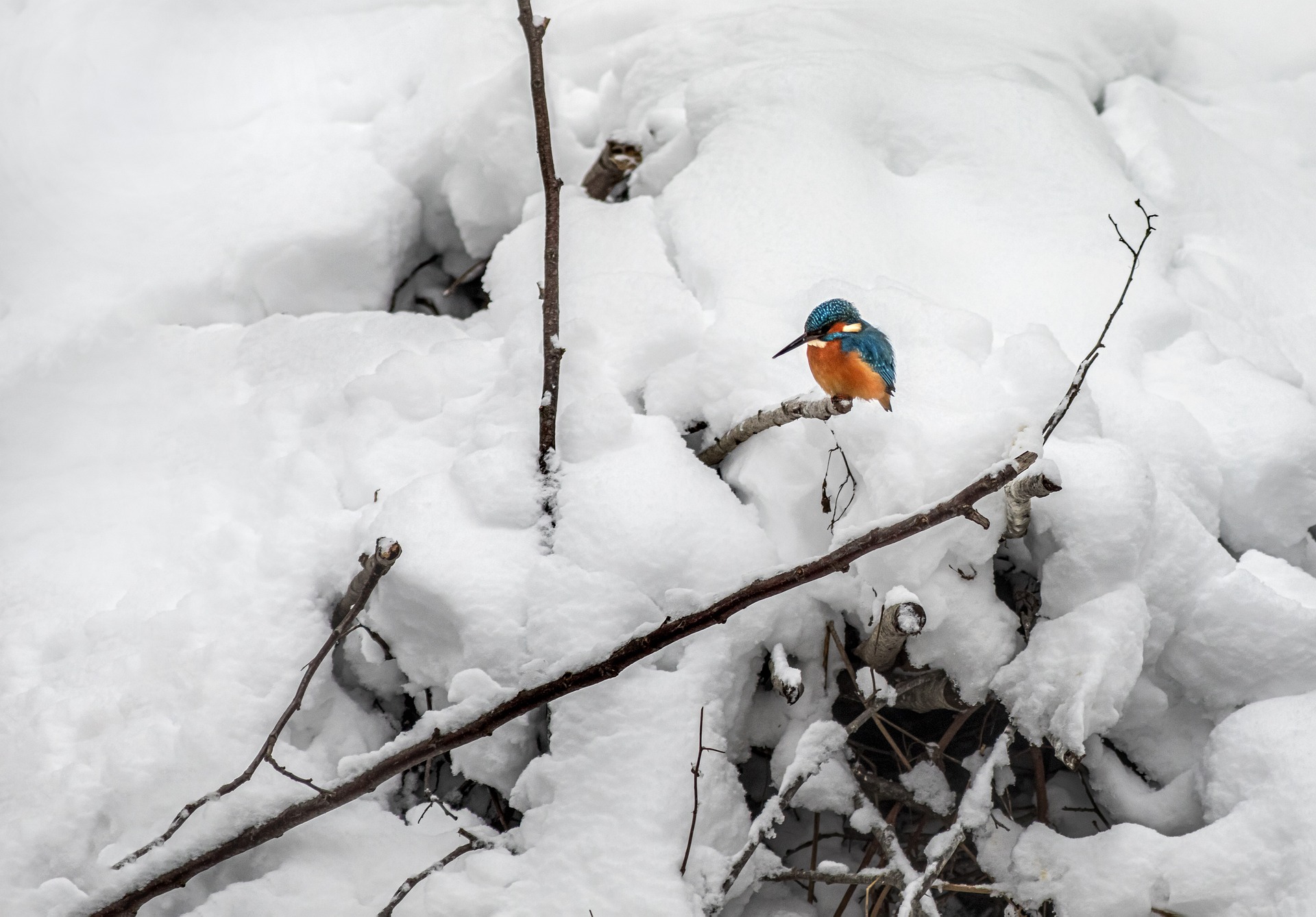The Common Kingfisher, scientifically known as Alcedo atthis, is a small and brightly colored bird found across Europe, Asia, and North Africa. Here are some key features and characteristics of the Common Kingfisher:
Appearance
- Size: The Common Kingfisher measures about 16 to 17 centimeters (6.3 to 6.7 inches) in length, with a wingspan of 24 to 26 centimeters (9.4 to 10.2 inches).
- Color: This bird is renowned for its vivid plumage. The upperparts are a striking metallic blue, while the underparts are rich orange. It has a white throat and a small white patch on each side of the neck.
- Bill: The bill is long, straight, and pointed, typically black in males and reddish-orange at the base in females.
- Feet: The feet are bright orange-red, which contrasts sharply with the blue and orange plumage.
Habitat
- Common Kingfishers prefer habitats near slow-moving or still freshwater bodies such as rivers, streams, ponds, lakes, and canals. They are often found in areas with overhanging vegetation, which provides perches for hunting and nesting sites.
Distribution
- This species has a wide range, spanning Europe, North Africa, and Asia as far east as Japan. While they are primarily resident birds, some populations in northern regions may migrate south during the winter.
Behavior
- Hunting: Common Kingfishers are expert fishers. They hunt by perching quietly on a branch or rock near water and diving swiftly to catch small fish and aquatic insects. They use their sharp vision to spot prey underwater and their long bill to catch and hold it.
- Flight: Their flight is rapid and direct, often low over the water. The bright blue and orange colors can be a blur of iridescence as they zoom past.
- Territoriality: These birds are highly territorial, especially during the breeding season. Males and females maintain separate territories, and they may engage in aggressive displays to defend their areas.
Breeding
- Nesting: Breeding typically occurs from April to August. Common Kingfishers nest in burrows that they dig into riverbanks or sandy banks. The burrow ends in a small chamber where the eggs are laid.
- Eggs: The female lays 5 to 7 glossy white eggs, which both parents incubate for about 19-21 days.
- Chick Rearing: After hatching, the chicks are fed by both parents. The chicks fledge about 23-27 days after hatching but remain dependent on their parents for a short period after leaving the nest.
Vocalizations
- The Common Kingfisher’s call is a high-pitched, sharp “peep” or “chee” sound, often heard as the bird flies past. This call is used for communication between mates and to defend territory.
Conservation Status
- The Common Kingfisher is currently classified as Least Concern by the IUCN. However, it is sensitive to water pollution and habitat destruction. Conservation efforts focus on preserving clean water bodies and suitable habitats to ensure healthy populations.
Interesting Facts
- The iridescence of the kingfisher’s feathers is due to the structure of the feathers, which refracts light rather than the presence of pigments.
- They can often be spotted sitting patiently by the water, waiting for the perfect moment to dive for prey.
- The Common Kingfisher has a rapid metabolism, which means it needs to eat frequently, consuming up to 60% of its body weight in fish each day.
In summary, the Common Kingfisher (Alcedo atthis) is a stunning and efficient predator with a distinctive appearance and fascinating behaviors. Its reliance on clean, healthy waterways makes it an important indicator species for the health of aquatic ecosystems.
Views: 11
Subscribe to the newsletter:
